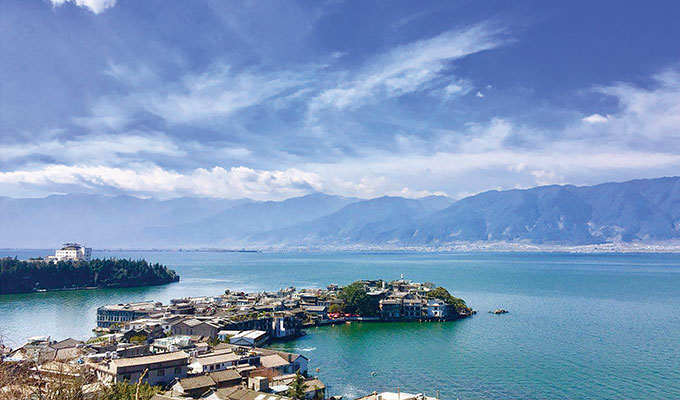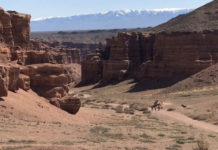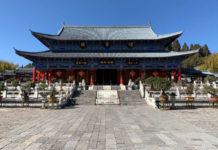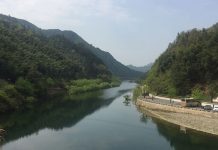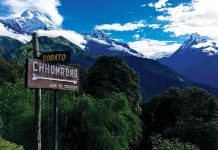“How much is this?” I asked the shop keeper, holding a handmade leather bag. It smelled raw and felt smooth, styled rustically. It brought me back to Chiapas, in the mountains of southern Mexico. A place that, just as with Dali, celebrates its indigenous craft and culture.
The rest of my time in Dali was spent in absolute amazement at just how similar these two places are, yet they sit opposite each other on either sides of the world. Furthermore, at roughly the same elevation above sea level (around 2,000m), both Dali in Yunnan, China and San Cristobal Del Las Cases in Chiapas, Mexico, are situated in ancient locations at the foot of a valley surrounded by mountains.
Before 1253, Dali was the capital of the Bai Kingdom, and was known as Jumie. Situated between the plateaus of eastern Tibet and Yungui, it boasts a mild subtropical climate, while its Mexican counterpart sits in the Central Highlands enjoying mild subtropical conditions. Geographically, environmentally and culturally, the uncanny similarities between the two help restore faith in the theory that the ancient Mayan peoples of Chiapas indeed walked over from Africa, settled in Eurasia before migrating onto the Americas, from perhaps Dali itself.
It was a couple of days before Spring Festival when we arrived early in the evening. We plonked our bags and went out for a bite. The trip was long and tiring; 15 hours of travel helped our first Dali beers go down a treat. We had taken a flight from Nanjing to Kunming followed by a 3-hour wait at the airport before a 4-hour bus ride. Due to the time of year, prices for flights direct to Dali from Nanjing were astronomical.
Known locally as Dali Old Town, it is distinctly different from Dali New Town, which is exactly as the name describes. Strolling down one of the Old Town’s main walking streets it is easy to see that, for once, the “ancient” buildings you see in front of you are indeed ancient. It feels old, it looks old and it smells old, omitting an aura of wisdom and tranquillity.
Coming from Nanjing, we did not expect to be sunburnt on our first day. Beaming vitamin D and good vibes all over the city in spectacular sunlight that shines all day long, after sunset, a light jacket is needed in order to step out and enjoy Dali’s nightlife. Electronic music bars sit side by side reggae lounges and rock pubs, which all host live acts every single night, something Nanjing lacks.
The Yunnan people of Dali are so chilled out that they seem a world away from their Northern workaholic countrymates. People can be seen lazing about in the sun outside cafés such as at corner favourite, Serendipity. They read, they play guitar, they chat and drink coffee or tea; they don’t seem stressed, they look happy and content, and it’s an infectious vibe.
After a few days of slowing down and living like a Dalian, we found our bodies and minds completely surrendering to this ancient town and its wise ways. In San Cristobal, pregnant women would make the pilgrimage there from all around the world in order to give birth; they make use of Mayan midwifery and bask in the area’s natural vibes. It is my suspicion that these ancient mountainous regions of the world have been fortunate enough to freeze the wisdom of the past that works at one with the environment by which it is surrounded.
Dali is not immune, however, to the lure of capitalism, as the streets are filled with tourist traps. Although one can get a feeling for Yunnan cuisine anywhere one lives in China, the freshness in Dali is second to none. Drinking water flows from the mountains and down into the town, where it is used to wash organic vegetables that have been grown locally, and that sit outside restaurants for guests to select; a luxury not even the riches of Nanjing can afford.
Dali is colourful, bright and a testament to local government efforts to preserve its ancient feel. Nearby is Erhai Lake, huge and surrounded by mountains and small villages. While a large part of its environs area is under construction, efforts to utilise Dali’s abundant sunlight it is evident in the public use of solar power.
Begrudgingly, we left Dali, making our way to the train station where we bordered a 7 hour sleeper train for Kunming. The gentle rocking of the train lulled us to sleep, where our dreams of a Dali life have solidified in our imaginations ever since.


